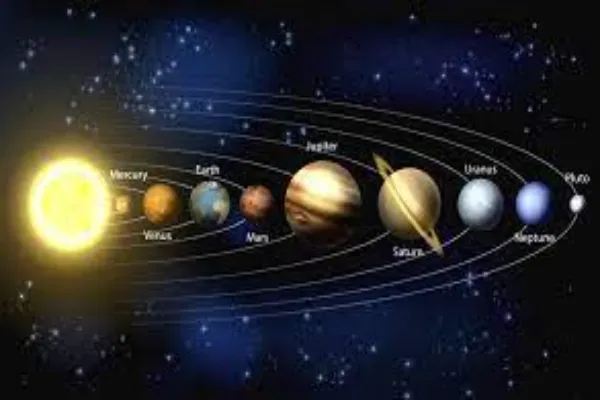Fun Facts About the Solar System
A Galactic Carnival of Fun Facts About the Solar System
Embark on a cosmic journey through our solar system, where celestial wonders and quirky facts abound, turning the vast expanse of space into an interstellar playground of surprises.
1. The Dynamic Duo: Mercury and Venus are the solar system’s dynamic duo when it comes to extreme temperatures. While Mercury holds the title for the hottest planet with surface temperatures that can soar over 800 degrees Fahrenheit (427 degrees Celsius) during the day, Venus claims the crown for the hottest overall temperature due to its thick atmosphere, which traps heat and creates an oven-like environment.
2. Saturn’s Fluffy Rings: Saturn, the ringed giant, is not just known for the sheer beauty of its rings but also for their surprising fluffiness. Despite appearing solid from a distance, the rings are primarily composed of icy particles ranging in size from tiny grains to larger chunks. If you were to gather all these particles, they’d form structures akin to loosely packed snow rather than a dense, solid ring.
3. Martian Twists: Mars, often called the “Red Planet,” has its own peculiar feature—the tallest volcano in the solar system. Olympus Mons, a colossal shield volcano, stands at a towering height of about 13.6 miles (22 kilometers). To put it in perspective, that’s almost three times the height of Mount Everest, the tallest mountain on Earth.
4. The Kuiper Belt’s Icy Playground: Beyond Neptune lies the Kuiper Belt, a vast region filled with icy bodies, including dwarf planets like Pluto. The Kuiper Belt is a celestial playground of icy wonders, offering a glimpse into the outer reaches of our solar system and challenging our understanding of the diverse objects that call this distant region home.
5. Jupiter’s Great Red Spot: Jupiter, the largest planet in our solar system, boasts a feature that has endured for centuries—the Great Red Spot. This massive storm system is larger than Earth and has been raging for at least 350 years, making it one of the longest-lasting storms in the known universe.
6. Comet Showers: Comets, those cosmic wanderers with brilliant tails, put on a celestial fireworks display when they approach the sun. As they heat up, comets release dust and gas, creating a glowing coma and a tail that points away from the sun. The annual Perseid meteor shower, for example, is caused by Earth passing through the debris left behind by Comet Swift-Tuttle.
Cosmic Playhouse: Fun Facts About the Solar System

Our solar system is a cosmic playground teeming with fun and fascinating facts that highlight the diverse and whimsical nature of our celestial neighbors. Take Venus, for instance, which experiences a phenomenon known as retrograde rotation. While most planets rotate on their axes from west to east, Venus spins in the opposite direction, making a day on Venus longer than a year. This quirky rotation adds a playful spin to our understanding of planetary dynamics.
In the outer reaches of the solar system, Uranus takes center stage with its peculiar tilt. Unlike other planets, Uranus essentially orbits the sun on its side, with its rotational axis tilted at a staggering 98 degrees. This cosmic somersault is thought to be the result of a colossal collision with another celestial body, lending Uranus its unique and offbeat characteristic.
Meanwhile, Earth’s moon, our celestial companion, exhibits a curious synchronicity. The moon is tidally locked to Earth, meaning it always shows the same face to our planet. This means that if you were standing on the moon’s far side, you would never witness Earthrise. This celestial ballet adds a touch of cosmic romance to the night sky, reminding us of the intricate dances that govern the cosmos.
One of the most astonishing features of our solar system is the sheer scale of its largest planet—Jupiter. This gas giant is so massive that it exerts a powerful gravitational influence on its surroundings. In fact, Jupiter’s gravity acts as a cosmic shield, deflecting many potential comets and asteroids away from the inner solar system and helping to protect Earth from potentially catastrophic collisions.
These fun facts about the solar system showcase the cosmic charm and diversity that make each celestial body a unique player in the grand cosmic symphony. As we continue to explore and uncover the mysteries of our solar neighborhood, the universe reveals itself as a vast and playful expanse, inviting us to marvel at its wonders.
Exploring the solar system unveils a cosmic carnival of surprises and curiosities, with each planet and celestial body contributing its own whimsical twist to the celestial tapestry. These fun facts about the solar system not only showcase its diversity but also remind us of the playful and extraordinary nature of the universe in which we reside.